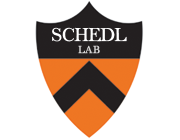Ggamma1, a downstream target for the hmgcr-isoprenoid biosynthetic pathway, is required for releasing the Hedgehog ligand and directing germ cell migration.
Publication Year
2009
Type
Journal Article
Abstract
The isoprenoid biosynthetic pathway leading from the production of mevalonate by HMGCoA reductase (Hmgcr) to the geranylation of the G protein subunit, Ggamma1, plays an important role in cardiac development in the fly. Hmgcr has also been implicated in the release of the signaling molecule Hedgehog (Hh) from hh expressing cells and in the production of an attractant that directs primordial germ cells to migrate to the somatic gonadal precursor cells (SGPs). The studies reported here indicate that this same hmgcr-->Ggamma1 pathway provides a novel post-translational mechanism for modulating the range and activity of the Hh signal produced by hh expressing cells. We show that, like hmgcr, ggamma1 and quemao (which encodes the enzyme, geranylgeranyl diphosphate synthetase, that produces the substrate for geranylation of Ggamma1) are components of the hh signaling pathway and are required for the efficient release of the Hh ligand from hh expressing cells. We also show that the hmgcr-->Ggamma1 pathway is linked to production of the germ cell attractant by the SGPs through its ability to enhance the potency of the Hh signal. We show that germ cell migration is disrupted by the loss or gain of ggamma1 activity, by trans-heterozygous combinations between ggamma1 and either hmgcr or hh mutations, and by ectopic expression of dominant negative Ggamma1 proteins that cannot be geranylated.
Keywords
Animals,
Drosophila,
Mutation,
Metabolic Networks and Pathways,
Protein Processing, Post-Translational,
Female,
Male,
Cell Movement,
Animals, Genetically Modified,
Hedgehog Proteins,
Drosophila Proteins,
Germ Cells,
Receptors, G-Protein-Coupled,
Wings, Animal,
Terpenes,
Dimethylallyltranstransferase,
GTP-Binding Protein gamma Subunits,
Farnesyltranstransferase,
Hydroxymethylglutaryl CoA Reductases,
Mevalonic Acid,
Smoothened Receptor
Journal
PLoS Genet
Volume
5
Issue
1
Pages
e1000333
Date Published
01/2009
ISSN Number
1553-7404
Alternate Journal
PLoS Genet.
PMID
19132091

